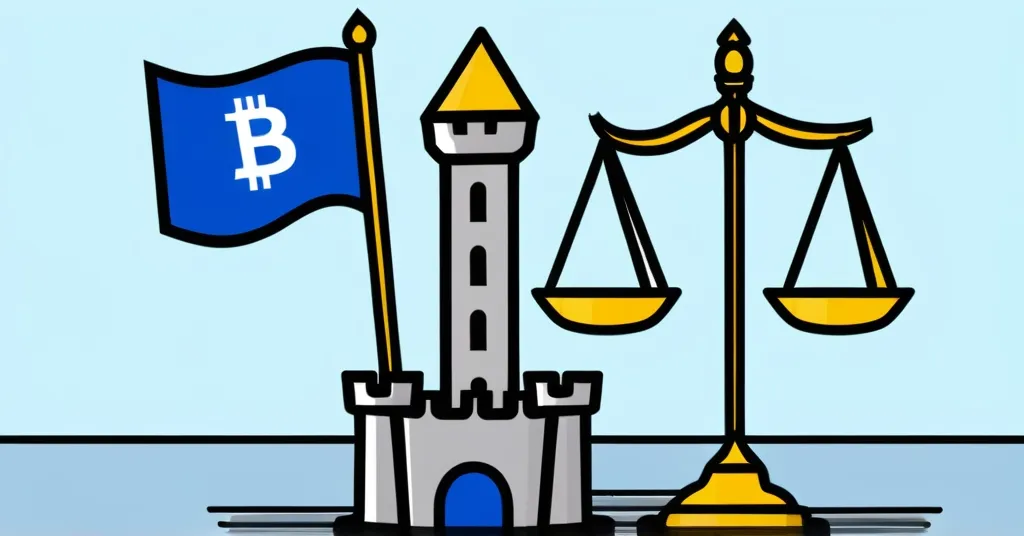Boerse Stuttgart Secures First EU MiCA License: A Milestone in Crypto Regulation

Boerse Stuttgart Pioneers with EU’s MiCA License: A New Era for Crypto Regulation
Boerse Stuttgart Digital Custody has become the first German crypto provider to secure a license under the Markets in Crypto-Assets Regulation (MiCA), marking a pivotal moment for crypto regulation in Europe. This milestone highlights the potential for regulated infrastructure to drive mainstream adoption while also raising questions about MiCA’s broader impact on the crypto ecosystem.
- First German crypto provider to secure MiCA license
- Significant growth in crypto trading revenue in 2024
- Impact on stablecoins and potential regulatory overreach concerns
On January 17, 2025, Boerse Stuttgart Digital Custody clinched the first EU-wide license under MiCA, which stands for Markets in Crypto-Assets Regulation, the EU’s new comprehensive regulatory framework for cryptocurrencies. This achievement, granted by Germany’s Federal Financial Supervisory Authority (BaFin), not only showcases Boerse Stuttgart’s commitment to compliance but also its drive to become a leading regulated infrastructure provider for financial institutions across Europe.
Matthias Voelkel, CEO of the Boerse Stuttgart Group, expressed his enthusiasm about the license, stating,
“On this basis, we will further expand the offering of Boerse Stuttgart Digital with integrated solutions for financial institutions across Europe and thus consistently continue the internationalization and structural growth of our digital business.”
This move is a testament to Boerse Stuttgart’s ambition and positions it as a key player in the European financial ecosystem, especially given its rapid increase in cryptocurrency trading. In 2024, the company’s crypto trading volumes tripled, with Bitcoin transactions accounting for roughly 50% of all activities on the platform.
By the end of 2024, Boerse Stuttgart was managing an impressive €4.3 billion in crypto assets for its clients, contributing a significant 25% to the company’s overall revenue. This surge in crypto engagement reflects the growing interest in digital assets and the increasing trust in regulated platforms. Imagine this: a world where your Bitcoin is as safe as your savings in a bank, but with the added thrill of decentralization. Boerse Stuttgart is making that vision a reality.
Moving forward, the introduction of MiCA, effective from December 30, 2024, has broader implications for the crypto industry. MiCA aims to provide a safer, more transparent environment for crypto transactions, but it’s not all sunshine and rainbows. A notable example is Coinbase’s decision to delist Tether (USDT) due to compliance issues under MiCA, highlighting the regulation’s impact on the stablecoin sector. This move underscores the challenges that some crypto assets face under the new regulatory regime.
On another front, MiCA has sparked concerns about potential regulatory overreach. Marina Markezic, co-founder of the European Crypto Initiative (EUCI), voiced apprehensions about the regulation’s impact on retail investors and innovation, stating,
“While MiCA is a significant step towards a harmonized European crypto market, concerns about regulatory overreach for retail investors persist.”
Markezic also pointed out the potential stifling effect of MiCA on innovation, particularly for smaller projects and decentralized finance (DeFi) initiatives, which are at the heart of the crypto revolution. She noted,
“MiCA will accelerate the institutionalization and consolidation of the EU crypto market, and spur a flurry of mergers and acquisitions between traditional finance and crypto-native firms, with some companies or specific products even ‘fading out’.”
These concerns raise important questions about the balance between regulation and innovation. While MiCA aims to protect consumers and stabilize the market, it might inadvertently create barriers for smaller players and disrupt the very essence of decentralization that many in the crypto community cherish. Navigating MiCA might feel like trying to solve a Rubik’s Cube in the dark, but Boerse Stuttgart seems to have figured it out.
Despite these challenges, the crypto industry’s trajectory towards mainstream adoption and regulatory harmony remains clear. Boerse Stuttgart’s achievement is a beacon for other institutions to follow, as they navigate the complexities of compliance and compete in an increasingly regulated market. Here’s the thing: while regulations like MiCA might feel like a regulatory sledgehammer, potentially crushing the life out of smaller crypto projects, they’re also paving the way for a more secure and trusted crypto ecosystem.
Looking ahead, the interplay between regulation and innovation will be crucial in shaping the future of cryptocurrencies in Europe. MiCA’s development involved extensive consultation and aims to cover a wide range of crypto assets, from utility tokens to stablecoins. Its key components include requirements for transparency, consumer protection, and anti-money laundering measures. As we move forward, it’s important to consider how these regulations might affect different aspects of the crypto market, from DeFi to NFTs and beyond.
Key Takeaways and Questions
- What is the significance of Boerse Stuttgart receiving the MiCA license?
It marks Boerse Stuttgart as the first German crypto provider to receive an EU-wide license, supporting its goal to become a leading regulated infrastructure provider for financial institutions in Europe.
- How has MiCA impacted the stablecoin market?
MiCA has led to actions such as Coinbase delisting Tether (USDT) due to compliance concerns, indicating a significant regulatory shake-up in the stablecoin sector.
- What are the potential challenges of MiCA for innovation in the crypto industry?
Concerns include regulatory overreach, ambiguity in regulation scope, particularly for DeFi and NFTs, and potential difficulties for smaller projects to meet regulatory demands, which could stifle innovation.
- How might MiCA influence the structure of the EU crypto market?
It may lead to increased institutionalization and consolidation, spurring mergers and acquisitions between traditional finance and crypto-native firms.
The future of crypto regulation in Europe hinges on finding a balance between fostering innovation and ensuring market stability. Boerse Stuttgart’s pioneering step under MiCA is just the beginning of what promises to be a dynamic evolution in the world of digital finance. Will the crypto industry rise to the challenge, or will the regulatory landscape prove too daunting for some?



